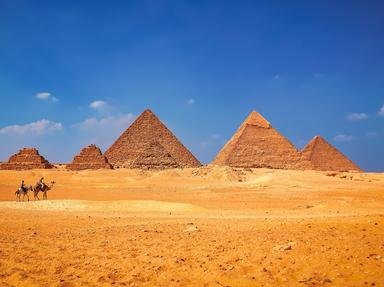Quiz Answer Key and Fun Facts
1. Which of the following events began the Archaic Age in ancient Egypt in approximately 3100 BC?
2. During the Archaic Age in ancient Egypt, the capital was moved from Thinis to which city, located on the border between Upper and Lower Egypt?
3. Dynastic rule did not exist in ancient Egypt during the Archaic Age.
4. Which of the following is another name for the Old Kingdom in ancient Egypt?
5. During the Archaic Period and Old Kingdom the position of the king, or pharaoh, evolved into one of great prestige and power. Which term best describes the type of government in ancient Egypt during this time?
6. During the Old Kingdom the ancient Egyptians did expand their trade network. Records state that they traveled to the southeast, where they traded in an area called Punt. While historians still debate the exact location of Punt, most agree that the Egyptians traveled which of the following to get there?
7. The style of art that was used throughout ancient times developed in Egypt during the Archaic Period and Old Kingdom. It consisted of three principles, including composite composition and hierarchy scale. Which of the following is the third principle?
8. Which of the following was the first type of pyramid constructed during the Old Kingdom in ancient Egypt?
9. Archaeologists today believe that the great building projects of the Old Kingdom in ancient Egypt were constructed entirely by slaves.
10. The Old Kingdom ended in approximately 2181 BC. What natural phenomenon aided in its demise?
Source: Author
ponycargirl
This quiz was reviewed by FunTrivia editor
bloomsby before going online.
Any errors found in FunTrivia content are routinely corrected through our feedback system.
